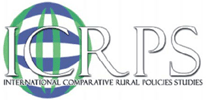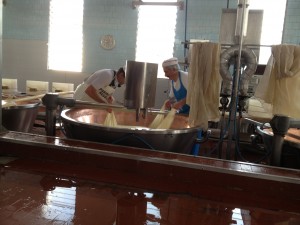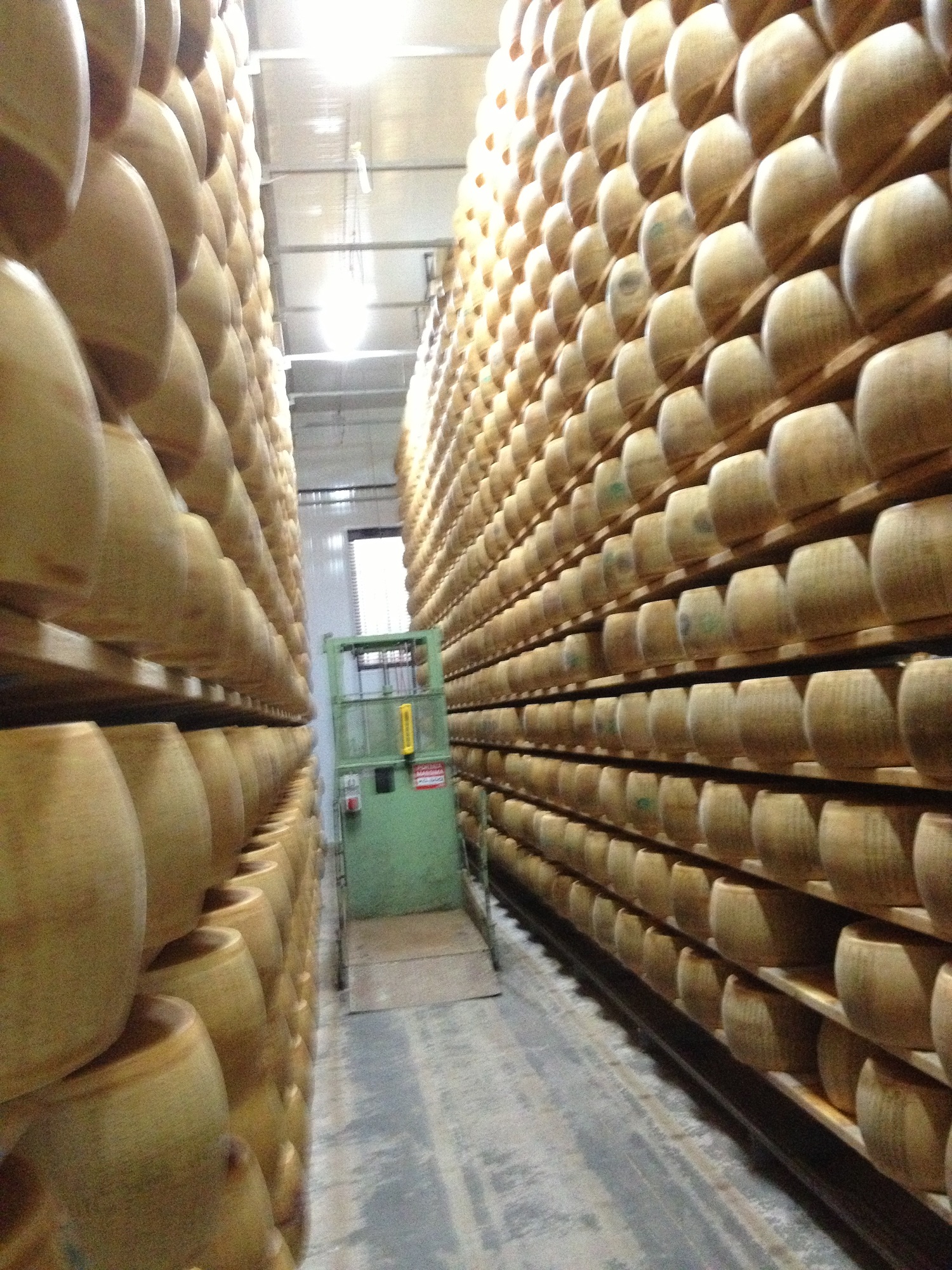by James D. Rossi, 21/06/2013 on day 4 of the 2013 Summer Insitute
Today’s ICRPS focused on field visits which included stops at producers of EU Demonination of Origin products (DOP), representatives of the Local Action Group (LAG) L’Altra Romagna, and an agritourism hotel/restaurant. DOP limits both the geographical region in which a good can be produced as well as the methods in which the good can be produced. The latter can include items such as what type of grapes can be used in the production of wines, the feed-types that can be fed to cattle for dairy goods, etc. This ensures both the quality of the final product as well as the consistency of the good.
Our day started bright and early with the group leaving Bertinoro at 6:15 AM (one of the many sacrifices we make for the readers of this blog). In two hours we arrived near Modena where we visited a dairy specializing in the production of parmigiano reggiano. After a tour of the facilities and a demonstration of the manufacturing process, we finally were able to taste the delicious cheese we had been salivating for over the past hour. As to be expected, the cheese was delicious and many of our group bought kilos of the cheese to bring back to our home countries.
Our next stop was Acetaia San Donnino, a DOP balsamic vinegar producer. Balsamic vinegar differs from its imitators in the production process in that the good can only be made from pure grape must (from either or both of two specific varieties of grape) and cannot contain any additives or flavorings. Moreover, the production process in highly regimented and includes a specific process of aging for a minimum of 12 years. This sets the DOP balsamic vinegar apart from its imitators in both flavor and consistency. We enjoyed a lunch featuring several products enhanced by the vinegar.
After our lunch, we again boarded our bus and traveled to Parco della Vena del Gesso, a park in the Emilia-Romagna region. We met with the park director and he explained many of the flora and fauna of the park, Roman era quarrying of the park, and many other interesting features of the park. Then we met with a representative of the LAG L’Altra Romagna (the other Romagna which differentiates it from the Romagna region typically associated with the coastal communities of Rimini and Ravenna). He discussed some of their initiatives of the group. As an added bonus, some of us (including the author) were able to pet one of the park worker’s pet wolf shortly before boarding the bus.
Finally, we traveled to Agriturismo Mariano, an agritourism hotel and restaurant in the area. The operator gave us a tour of the grounds including many types of fruit production including peaches, nectarines, kiwi, etc. Following our tour, we enjoyed a fantastic meal with copious amounts of wine. Bill Reimer (Concordia University) led us in a Canadian camping song prior to dessert. Exhausted, we boarded the bus one final time for the trip back to our lodgings.
Photos: Jim Ross










